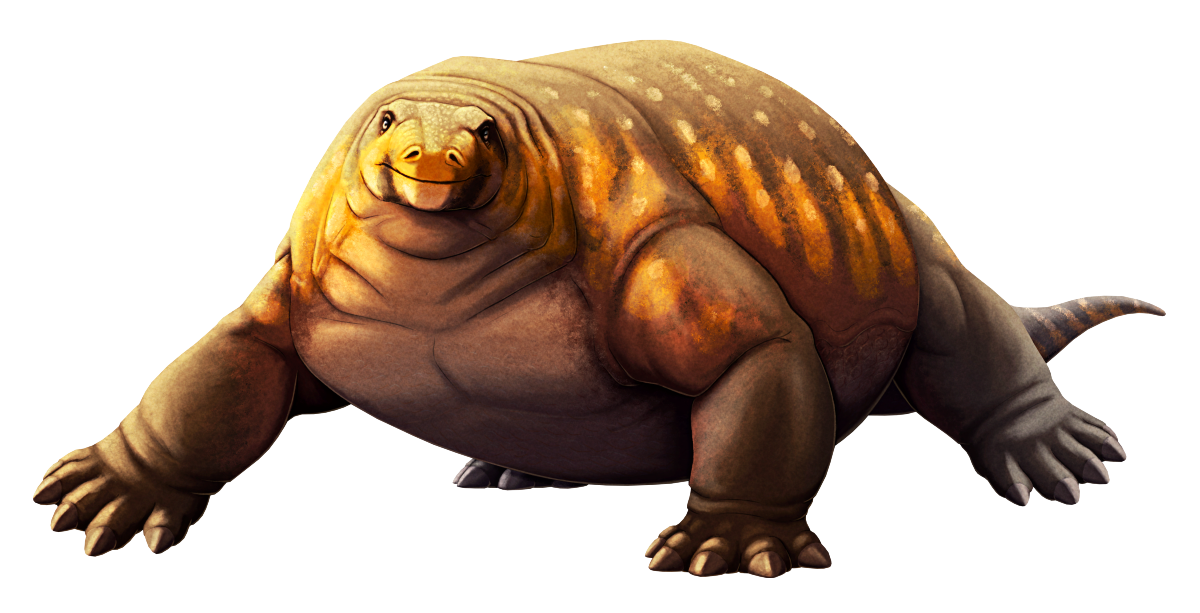Angelosaurus dolani was an early synapsid, part of the caseid family and closely related to the more well-known Cotylorhynchus.
Living in what is now Texas, USA during the mid-Permian, about 270 million years ago, it’s only known from partial skeletal remains but was probably around 3m long (~10′).
Like other large herbivorous caseids it would have had a tiny head with proportionally big nostrils, a short neck, a large barrel-shaped body accommodating a voluminous gut, a long tail, and strong sprawling limbs. But compared to its relatives Angelosaurus was particularly bulky, with shorter thicker heavily-muscled limbs and stubbier digits ending in broad hoof-like claws.
In closely related caseids the presence of teeth on the roof of the mouth and a well-developed hyoid apparatus suggests these animals had big tough tongues, which may have been used to mash mouthfuls of plant matter against the palatal teeth to partially break it up before swallowing.
Based on skin impressions from other early synapsids, Angelosaurus probably had crocodilian-like scutes on some parts of its body – likely on its underside and tail, and maybe also on the top of the head as indicated by the pitted bone texture of caseid skulls – but whether the rest of its skin was scaly or naked and glandular is currently unknown.
In recent years there have also been some proposals that large caseids may have had a semiaquatic hippo-like ecology, but this idea is controversial.
Continue reading “Angelosaurus”


